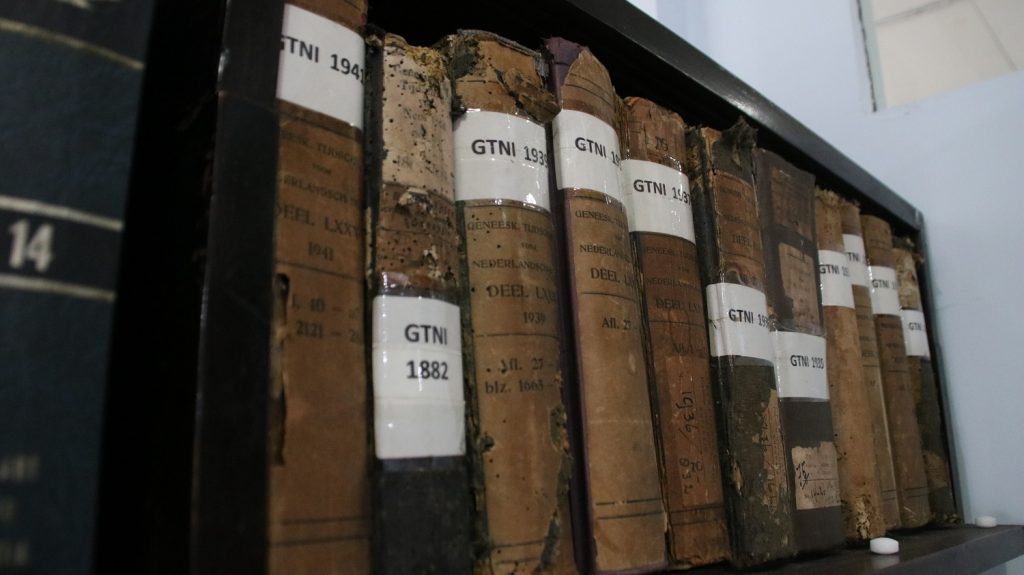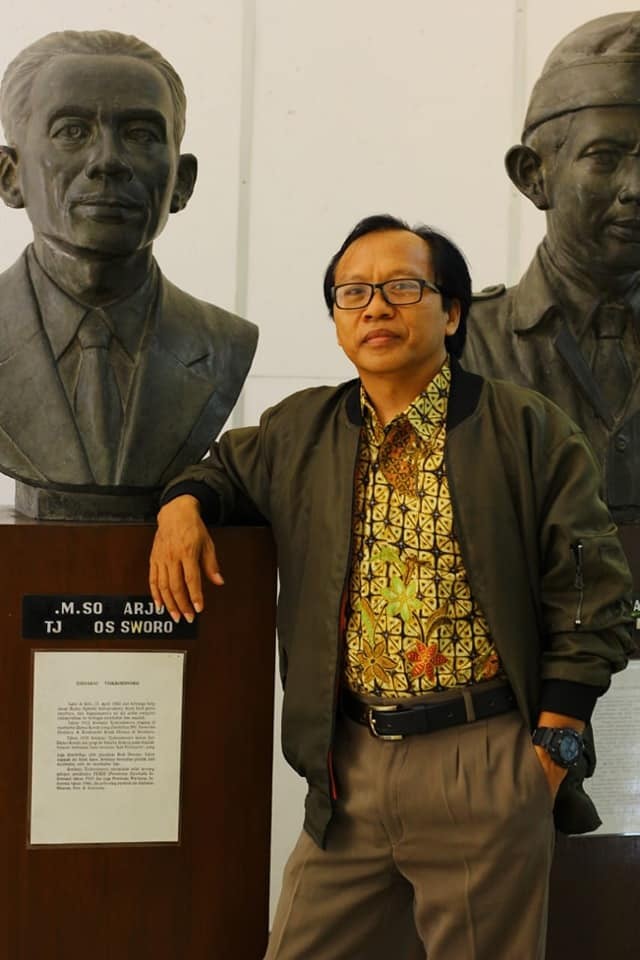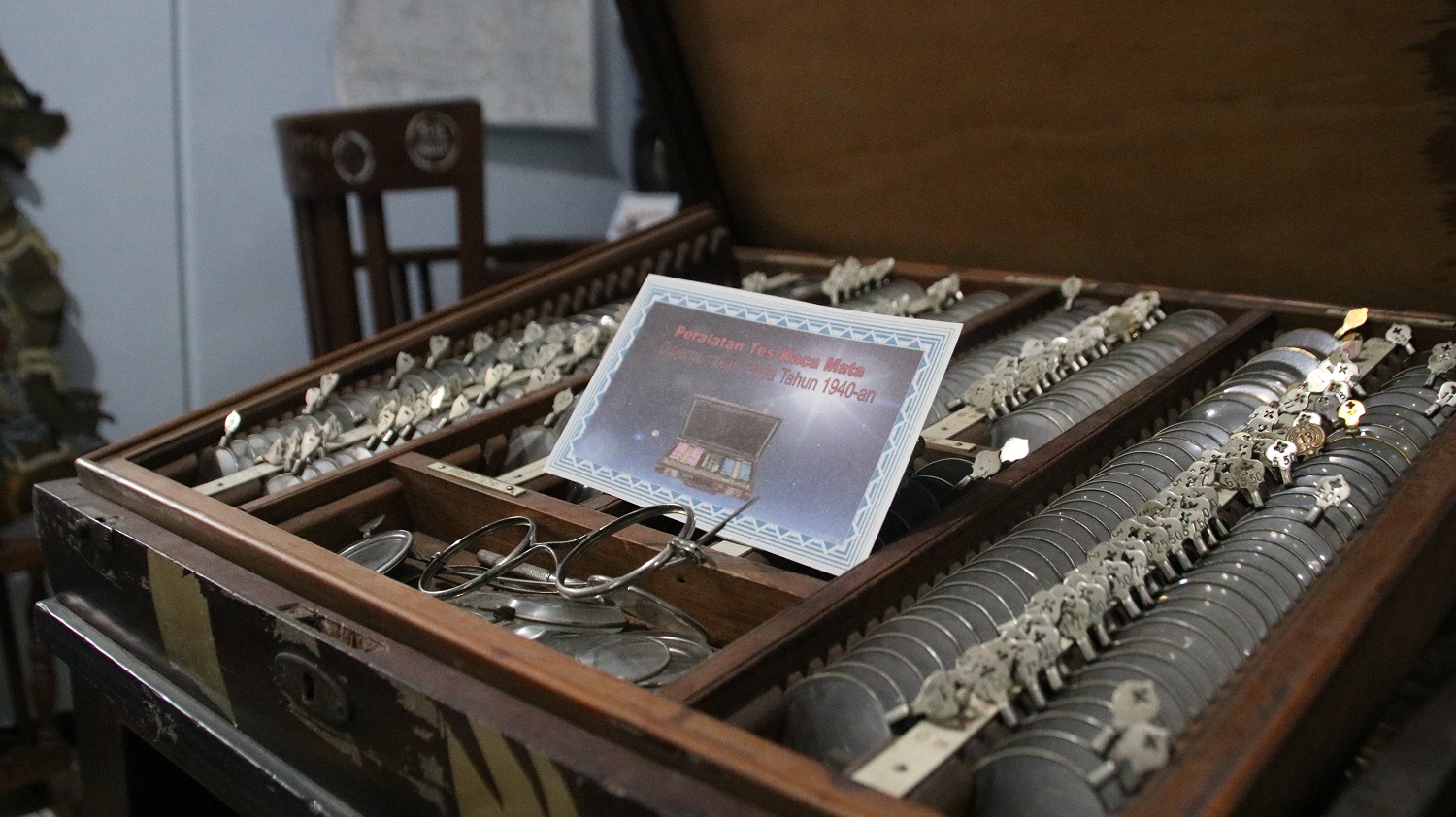UNAIR NEWS – The Museum of History and Culture of Universitas Airlangga was initiated in 2007 by the History Study Program with Dr. Haryadi. The museum was established to build awareness of the importance of ancestral cultural heritage education, which received less attention from the Indonesian younger generation.
Edy Budi Santoso S.S., M.A. as Head of UNAIR Museum of History and Culture, said that the museum was built as a medium of learning and knowledge on cultural heritage objects. The establishment of the museum also supports UNAIR’s Sustainable Development Goals (SDGs) achievement in the field of Sustainable cities and communities for public access to museums indicator.
The museum also introduces the historical importance of ancestral cultural heritage from the past to the present. According to him, UNAIR History and Culture Museum have various roles and functions, including in the aspects of education, research, exhibition and maintenance, and documentation.
In supporting this museum, UNAIR’s History Study Program has prepared several relevant courses for the development of the museum. These include courses on Cultural Heritage and Musicology, Ethnography, and Pre-literary History.
UNAIR Museum of History and Culture collections
Edy said that UNAIR History and Culture Museum stores all things related to the cultural works of ancestors. To date, the museum has about 200 collections.
“Although the collections are not many, this museum already has some quite rare collections,” he explained.
These rare collections include ancient items related to the process of human life and the development of society, starting from traditional human works to modern works.
Edy explained that visitors can see various collections of ancient books and rare archives that are neatly arranged in the first room of the museum.

There is also a collection of traditional musical instruments such as angklung, gender, rebab, and classical Kalimantan musical instruments. In the second room, he continued, the museum keeps a large collection of valuable objects.
“Here, there is a collection of photos of Surabaya since the Dutch colonial period. The cultural heritage collection standing out is a collection of ancient photos of Soekarno, the first president of the Republic of Indonesia, looking alive and energetic,” he said.
In the second room of the museum, there are also ancient maps and paintings. Then below the photos, there are desks and office equipment. There is also a glass display case containing traditional clothes from several regions, numismatic collections, bronze statues, traditional weapons, and a collection of cameras.
“At the side of the second room, there are several tables on which are placed some antique objects such as an ancient typewriter. While in the left corner of the room, there are adult mannequins such as mirrors, sewing machine tables, optical equipment, wall clocks, projectors, and lighting fixtures,” he explained.

Other objects in the UNAIR History and Culture Museum include lamps from various ages, such as cempluk, petromak, pendant lamps, and classical study lamps. On the other side, there is a metal cupboard that holds rare ceramics from the Ming and Ching dynasties, mini Chinese terracotta, and corpse masks.
UNAIR also has two more museums that can be accessed by the public, the Medical Museum under the management of the Faculty of Medicine, and FISIP’s Ethnography Museum, also known as the museum of death.
UNAIR, as one of the best universities in Indonesia, encourages the entire academic community to contribute to the wider community. (*)
Author: Sandi Prabowo
Editor : Binti Q. Masruroh





